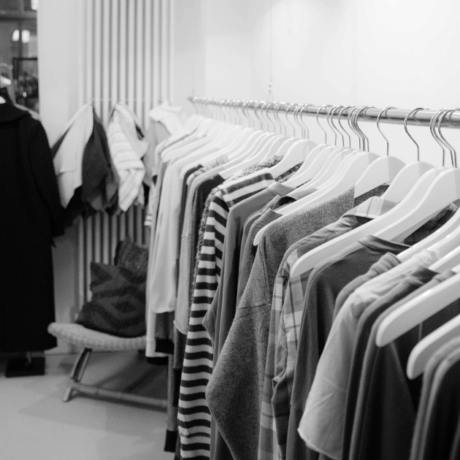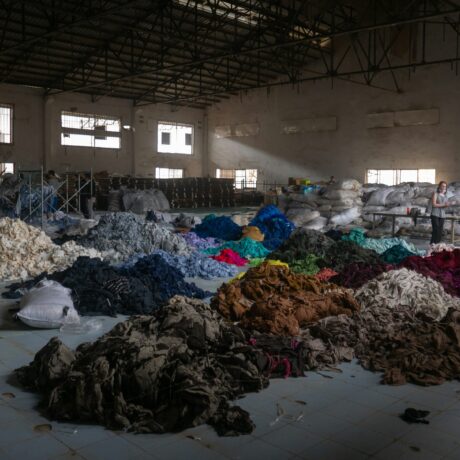2022 Fashion Predictions
In 2021, there was a shift towards sustainable fashion with a lot of planning being done and ambitious targets being set – but not much action. According to Vogue Business, some of the biggest brands are talking about end-of-life impacts and establishing biodiversity strategies, reflecting a shift in mindset as we enter the new year. The biggest themes as we head into 2022 are legislation, digital fashion, and the relationships we have with our clothes.
@fashionrevolution Our predictions for the fashion industry in 2022 🔮✨ #2022fashion #sustainablefashion #fashionrevolution ♬ Lazy Sunday – Official Sound Studio
Legislation
Legislation will be key when it comes to accelerating change across the industry. Due to the fashion industry’s extensive supply chains that are stretched across multiple continents, fashion has largely been left unregulated. We are already seeing this trend towards legislation with New York’s Fashion Act, which aims to address this issue, by requiring brands to disclose their greenhouse gas emissions, as well as their energy usage and labour practices. Greenwashing is also going to be in focus this year, with the UK launching an investigation into false or misleading marketing around the environmental impact of a product, via its Green Claims Code published last year. The EU is also expected to introduce specific labelling guidelines for brands that wish to make claims about a product’s eco-credentials.
View this post on Instagram
The pandemic highlighted the need for more protections for garment workers, after many of them lost their jobs or faced dramatic wage cuts due to cancelled orders costing billions. The Garment Worker Protection Act passed in California last October – which guarantees hourly wages for garment workers and holds both manufacturers and brands liable for wage theft and illegal pay practices – set a precedent for brands being held accountable for their supply chains, and the proposed due diligence legislation in the EU is expected to do the same.
Digital Fashion
We’re only one month into 2022 and we are already seeing the rise of digital fashion; The pandemic magnified its relevance as events the industry once thrived on were made near impossible. As a result, digital fashion has almost immediately been considered the future of sustainable fashion as it offers clothes without production, pollution, and waste, and fashion shows without international flights. While London Fashion Week embraced online showcases, Helsinki Fashion Week held the first entirely 3D fashion week on Digital Village, a social metaverse. James Joseph, founder of CYBR, even went as far as to say: “In four years we imagine that everyone will walk around with AR glasses on, and you will have the digital world imposed on reality for millions of people constantly”.
View this post on Instagram
While this is an interesting concept, especially as the industry faces it’s problems of over-production, many people cite affordability as the reason they buy fast fashion, which presents us with the question: will the average person really be willing to buy clothes they can’t actually wear? Speaking of virtual apparel, what would this mean for the tens of millions of garment workers around the world who depend on physical manufacturing jobs for their survival?
Furthermore, when digital clothing is created and sold as an NFT, the power consumption of a single Ethereum transaction is equivalent to that of an average US household over 4.38 days. Fashion without flights, overproduction, or disposable outfits sounds great, but because of its high energy demand, the ICT sector – which powers digital fashion – is a source of greenhouse gas emissions.
Repairing Relationships
Re-examining the relationship we have with our clothes, as well as how to help the communities and ecosystems that have been damaged by the fashion industry will be crucial in 2022. Our co-founder Orsola de Castro predicts that “the key trends for 2022 will be repairs and reparations; repairing garments when they break, and being prepared to offer reparations to the people, ecosystems and natural resources that have been marginalised and exploited for centuries.”
View this post on Instagram
In 2022 we will see people begin to question their connections with their clothes, as fashion’s over-consumption and waste crisis comes into sharp focus. Buying clothes is often an emotional process that changes as we go through different life stages; the pandemic has undoubtably had an effect on our buying habits and may have triggered a shift in terms of how we consume clothing, as difficult questions about the industry and its practices are circulating more widely. This year, we hope to see people curating a more intentional relationship with fashion and realising the true value of the clothes they wear, thinking of clothing beyond the product and instead as a tool for storytelling and a source of inspiration for the next generation.
View this post on Instagram
Recommended reading and resources:
Fanzine 06: ACTION REQUIRED: 10 Global Goals That Will Change Fashion
Report: The impact of Covid-19 on the people who make our clothes
Video: How to appreciate the stories behind things








